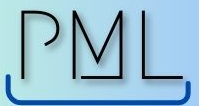In the complex world of project management, various methodologies promise to enhance the efficiency and success rates of projects. Among the most globally recognized and utilized is PRINCE2, or “Projects IN Controlled Environments”. But what is PRINCE2, and why has it become such a hallmark in the world of project management? This article delves deep into the framework, principles, themes, and processes that make PRINCE2 stand out.
Origins of PRINCE2
PRINCE2 emerged in the UK during the 1980s, originating as PRINCE which was an IT-specific methodology designed for the UK’s Central Computer and Telecommunications Agency (CCTA). Realizing the broad potential of the approach, PRINCE was re-engineered in 1996 to be applicable to all project types, leading to the birth of PRINCE2.
PRINCE2 at a Glance
PRINCE2 is a structured approach to project management, offering a detailed roadmap from the beginning to the end of a project. It breaks down projects into manageable and controllable stages, with a keen emphasis on:
Regular reviews of progress against the plan
Assured flexibility to deviations
Clear roles and responsibilities within the project management team
Foundational Principles
PRINCE2 stands firmly on seven guiding principles. These principles must be applied, but they are adaptable to the project’s scale, nature, and complexity.
Continued Business Justification: A project must have a clear need, a defined customer, realistic benefits, and a detailed cost assessment.
Learn from Experience: Lessons are sought, recorded, and acted upon throughout the life of the project.
Defined Roles and Responsibilities: Everyone involved understands their tasks, responsibilities, and accountabilities.
Manage by Stages: The project is divided into stages, making it easier to manage and monitor.
Manage by Exception: Establishing a clear tolerance for each project objective, thereby avoiding micro-management.
Focus on Products: The project’s outputs, quality requirements, and the means of their delivery are clearly defined.
Tailor to Suit the Project: PRINCE2 can be tailored to meet the needs of any project regardless of context and size.
Themes of PRINCE2
Themes in PRINCE2 provide insight into how the project will be managed. The seven themes are:
Business Case: Determines if the project is desirable, viable, and achievable.
Organization: Defines roles and responsibilities within the management structure.
Quality: Ensures the project’s outputs are of the required standard.
Plans: Offers a framework for strategy and tactics, essentially visualizing the final product.
Risk: Addresses uncertainties that could impact objectives.
Change: Handles project changes smoothly and effectively.
Progress: Monitors the project status against the plan and the business case.
Processes in PRINCE2
The PRINCE2 methodology is described through a series of processes. Each process provides a step-by-step approach to guide the project team from initiation to closure.
Starting up a Project: The preparatory step where the project’s feasibility and justifications are evaluated.
Directing a Project: Senior management takes the helm, providing overall direction for the project’s lifecycle.
Initiating a Project: Establishing a more detailed foundation before diving into more significant phases.
Controlling a Stage: Day-to-day project management tasks to ensure each stage remains within scope.
Managing Product Delivery: Ensuring the project delivers the required outputs while maintaining quality standards.
Managing a Stage Boundary: Decision point to proceed to the next stage or not.
Closing a Project: Wrapping up the project, assessing its overall success, and deriving learnings.
Benefits of PRINCE2
Universally Recognized: PRINCE2 certification is sought after globally, indicating a clear standard of project management competency.
Scalable: It can be tailored to the needs of any organization or project, regardless of size or sector.
Enhanced Control: By breaking projects into manageable chunks, teams have better control and more opportunities for review and realignment.
Clear Roles and Responsibilities: No ambiguity about who is responsible for what within the project.
Focus on Continued Justification: By continually justifying the business case, projects that are no longer viable can be stopped, saving time and resources.
Conclusion
In a world where projects are the vehicles driving change, having a structured, reliable, and adaptable methodology is crucial. PRINCE2 offers an end-to-end framework that can be tailored to fit any project’s unique demands. By providing clarity, control, and consistency, PRINCE2 has, and continues to be, an invaluable asset in the toolkit of project managers around the globe.


